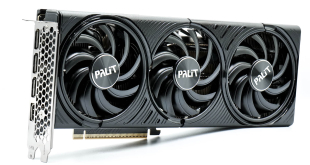The Gladiator Sparta i5 system bundle uses Gigabyte’s Z87-HD3 motherboard which is equipped with the company’s fresh UEFI BIOS.
Using a 1920 x 1080 resolution (on our test monitor, at least) to cram plenty of voltage, frequency and temperature readouts onto a single page, the Gigabyte interface can be somewhat daunting at first look. After paying closer attention to which settings are crucial and which ones are for more specific purposes, the interface becomes far easier to interpret.
Thankfully, one of the positive points for Aria’s Gladiator bundle is its pre-defined BIOS settings. Users are unlikely to be forced into the BIOS unless a change of settings is necessary.
Many of the CPU’s clock settings are set to ‘auto’, other than the core ratio that is configured to 44x for a 4.40GHz processor frequency. Aria’s applied overclock is static, not dynamic, so 4.40GHz will be the system’s continuous operational frequency.
Memory is manually configured to operate at its 1600MHz rated frequency. Timings mode is set as ‘expert’ but the standard CL9 settings are applied.
Given that the Corsair modules are rated for 1600MHz CL9 at a low voltage of 1.35V, the XMP profile automatically configures the modules to run close to their rated voltage, levelling-out at a setting of 1.36V.
CPU input and ring (cache) voltages are manually configured to enhance stability of the 4.40GHz overclock. 1.900V is applied to the CPU input, while the ring (cache) uses a voltage of 1.150V. Both of those settings are likely to be fine for a 4.40GHz processor frequency.
To further enhance system stability, the CPU Digital and Analog I/O voltages both receive a +50mV offset.
Using a setting of 1.350V, the Gladiator Sparta i5 system bundle’s applied CPU Vcore is approaching the limit of safety for 24/7 usage. While our temperature tests prove that Scythe’s Ashura CPU cooler is able to tame the processor’s heat output, a higher voltage level would warrant improved cooling.
Ideally, we would have liked to see the applied Vcore level at around 1.30V or less. This level of voltage would keep temperatures in check, even for extended time periods, and it would give peace of mind with the 4670K’s lifespan. Bear in mind that Aria gives the Gladiator Sparta i5 bundle a 2 year warranty, so the company is clearly confident in its chosen overclock settings.
Most of the fan settings remain unchanged or optimised for user convenience. A gradient of 2.50 PWM value per degree Celsius is set for the CPU fan. Graphically, this equates to quite a rapid rate of response to increases in CPU temperature.
Aria’s system builders save the 4.40GHz overclock settings to a specific BIOS profile. An additional profile is used for backup purposes in the event that the primary parameters are overwritten.
If this isn’t enough (if the BIOS is corrupted, for example), Aria also supplies an 8GB USB flash drive with the overclock profiles saved to it.
 KitGuru KitGuru.net – Tech News | Hardware News | Hardware Reviews | IOS | Mobile | Gaming | Graphics Cards
KitGuru KitGuru.net – Tech News | Hardware News | Hardware Reviews | IOS | Mobile | Gaming | Graphics Cards








